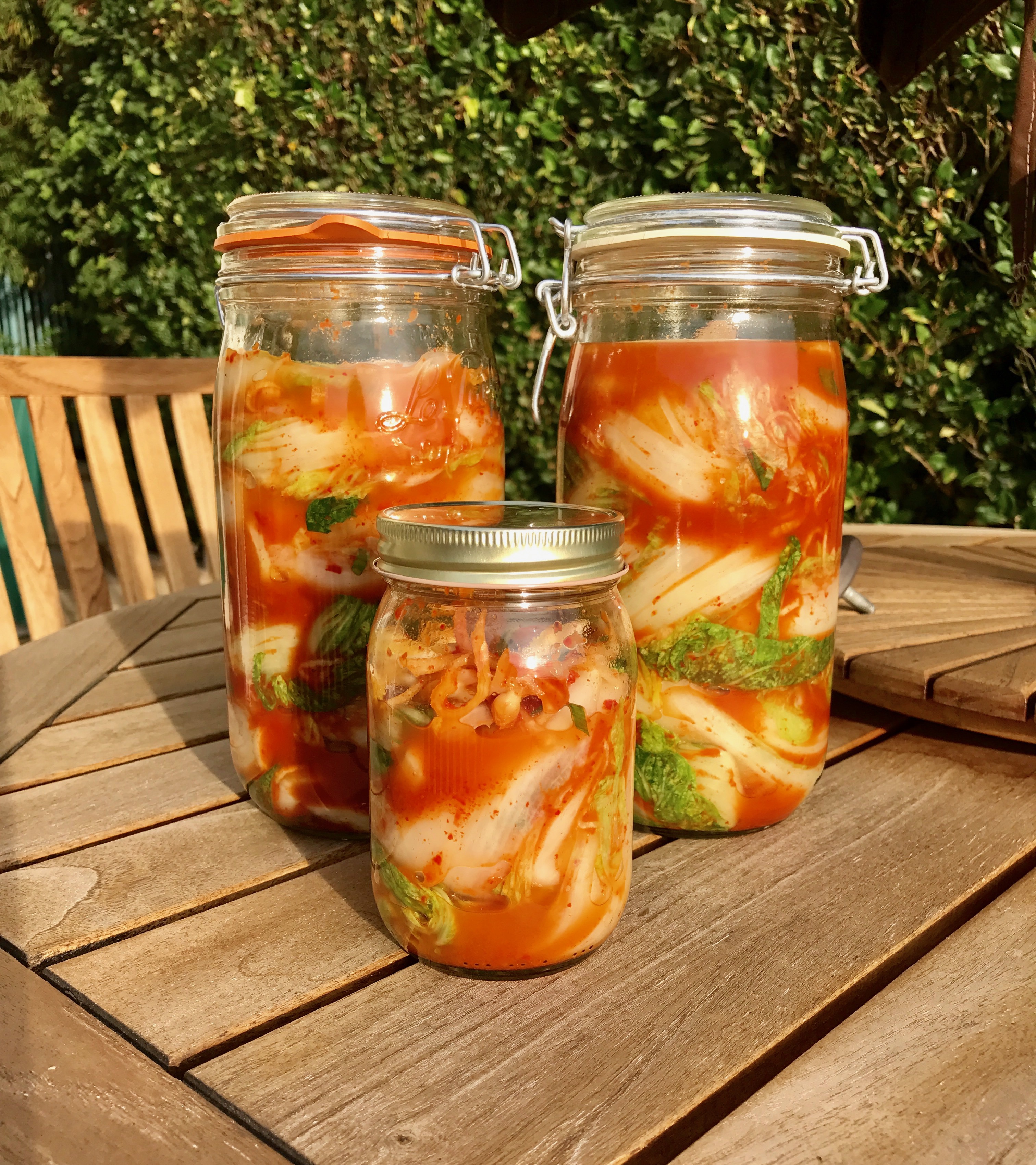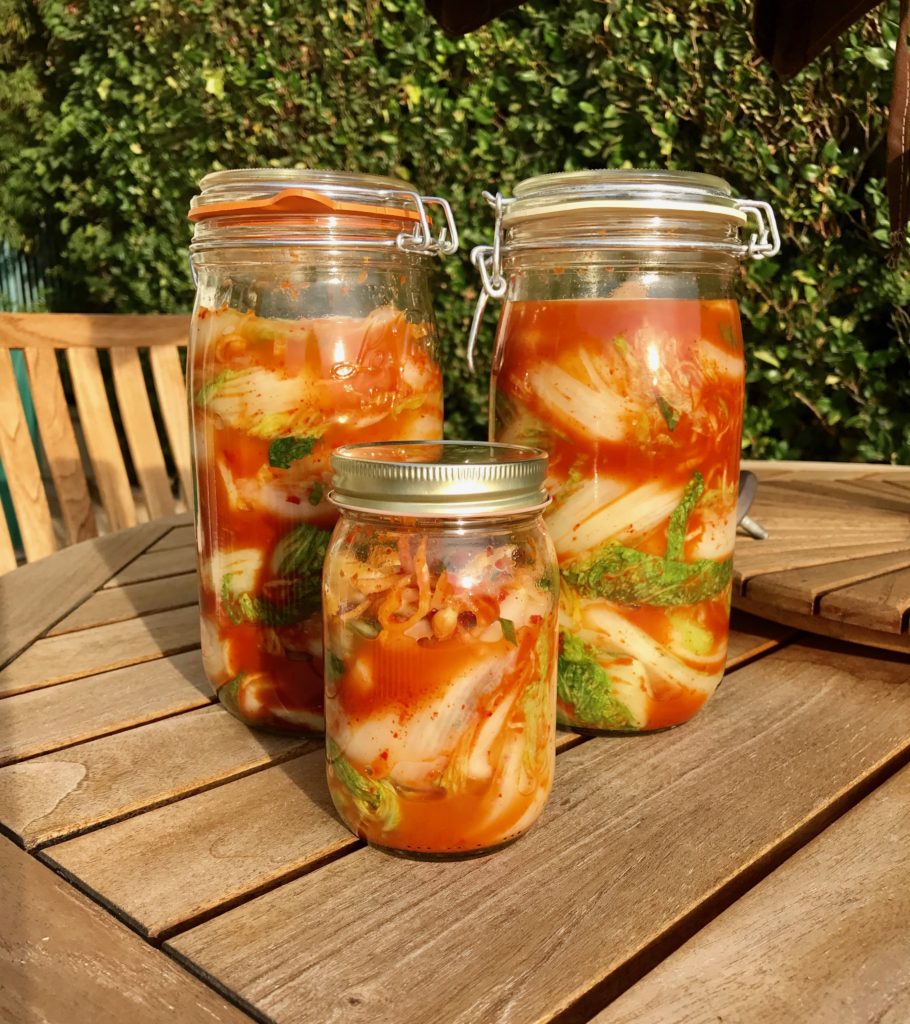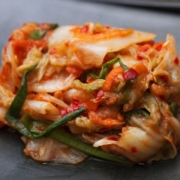Cheeseburgers and French fries might seem like the staple of the American diet, but in Korea where I am from, it is a popular fermented cabbage dish called Kimchi. Usually served as a side dish but also often integrated with entrees, Kimchi has been served in Korean cultures for centuries. Its consumption dates back anywhere from 2600 to 3000 years ago, and unlike the staple foods of other cultures, Kimchi is loaded with probiotics. It was even thought to prevent the spread of Avian Bird Flu back in 2003!
Traditionally, Kimchi is made with various seasonings including garlic, hot red pepper, green onions, and ginger. To date over 200 varieties of Kimchi exist, with just as many recipes widely available in books and on the internet. Essentially Kimchi is a pickled, fermented cabbage traditionally served at every Korean round table. Personally, I love the cabbage and cucumber Kimchi and eat it every chance I get- even with my gluten free Bolognese pasta dish! Well-known for its pungent smell and spicy taste, Kimchi is highly beneficial to the body, producing healthy nutrients, inhibiting unhealthy bacteria and promoting gut-friendly bacteria.
The ancient Korean cuisine became notably popular in the U.S. after it was named one the top 5 healthiest foods in the world by Health magazine. Aiding in digestion and healthy flora of the gut, Kimchi is rich in calcium, iron, vitamin A, vitamin C, and a host of other nutrients. Additionally some of its key ingredients, garlic and onion, work to lower cholesterol levels and bolster intestinal health. Further studies involving Kimchi on rats and mice have indicated that the dish can also contribute to lower stress levels, inhibit cancer growth, and even decrease the development of wrinkles.
Below is a great video on how to make Cabbage Kimchi by Kimchi expert Maangchi who has several books and a DVD on all types of Korean recipes. I just love her recipes! I do suggest the following if you are attempting to make this at home:
- Use a tablespoon of honey instead of sugar
- Replace these ingredients with organic ingredients as much as possible
- Use Thai fish sauce instead of oyster sauce (found in the asian food isle at local market)
- Use half a cup of the red pepper flakes, which can be found at Korean markets only.
http://www.maangchi.com/recipe/kimchi-kaktugi
References:
How to make Cabbage Kimchi:
http://www.maangchi.com/recipe/kimchi-kaktugi
http://www.lovethatkimchi.com/Kimchi_Recipes/Kimchi-Recipes.html
Place to buy traditional Korean Kimchi:
http://koreanslate.com/directory/koreatown/retail-shopping/supermarkets/koreatown-plaza-market.html









I love kimchi.